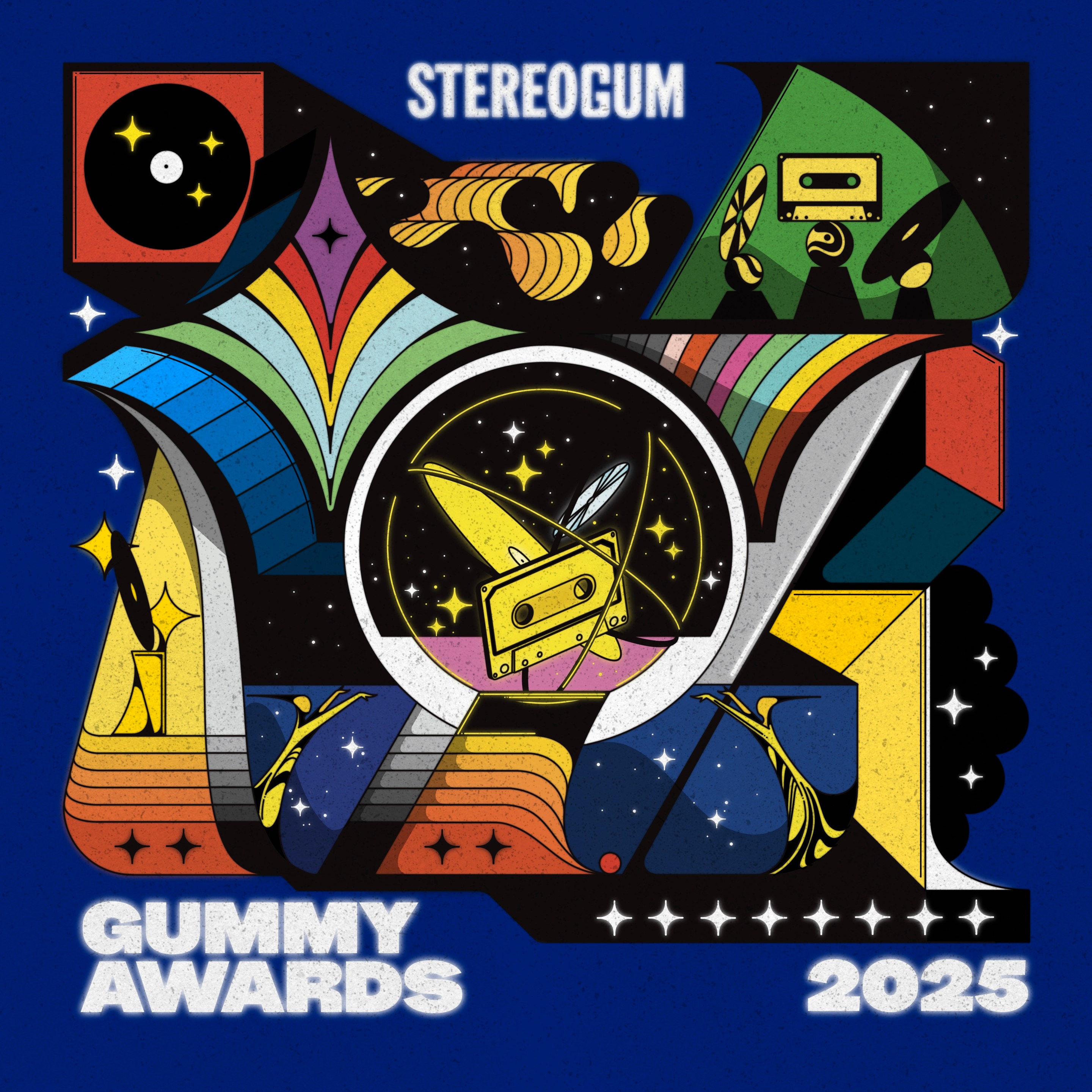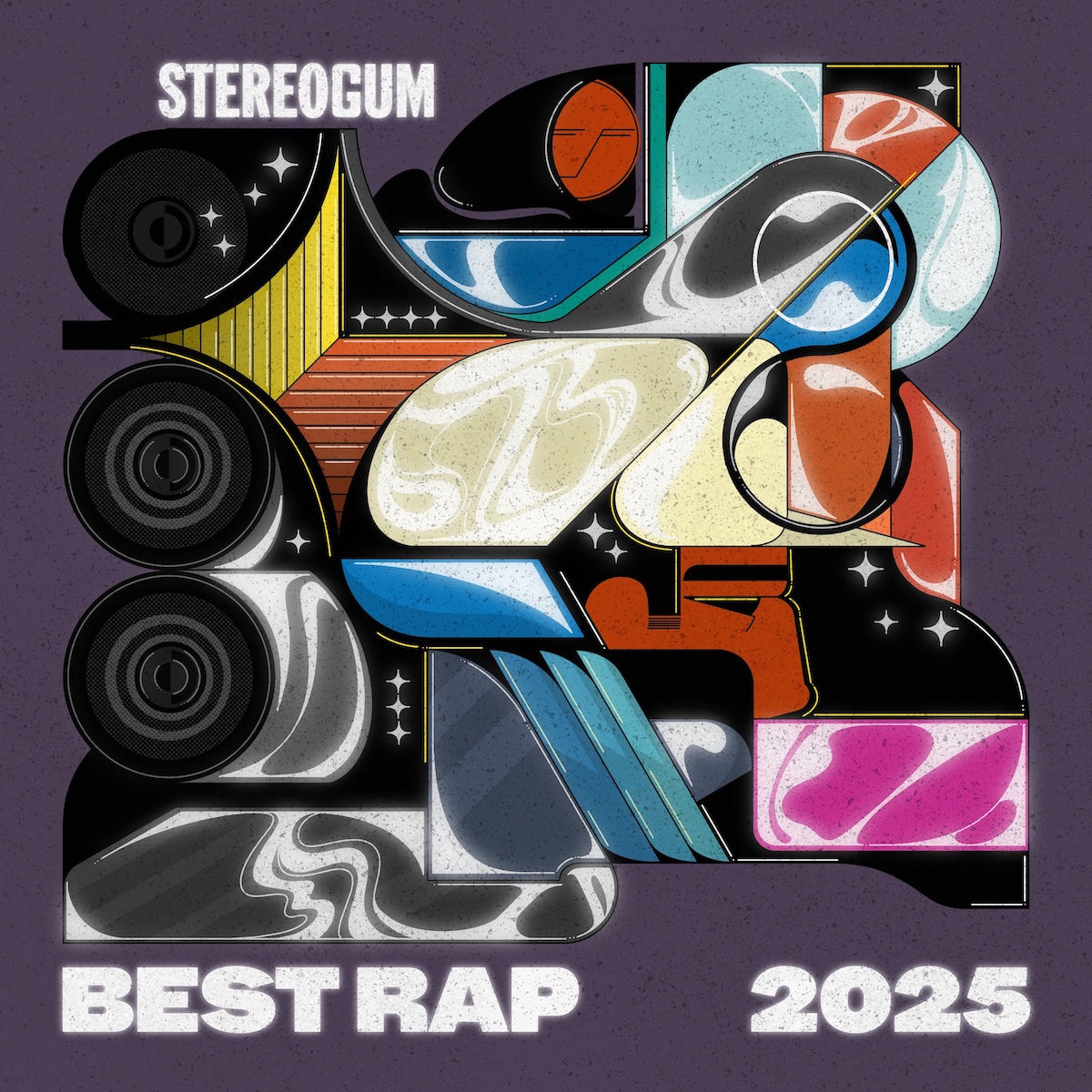The Stereogum staff is headed to Basilica SoundScape in Hudson, NY for the weekend. We look forward to dressing up in black robes and communing with spirits, both good and evil. Hopefully no one gets too spooked and we all make it back in one piece!! Here are the five best songs of the week.
5. The Spirit Of The Beehive - "hypnic jerks"
The Spirit Of The Beehive's new album Hypnic Jerks is a hazy head trip that lurches into focus on its title track. The first seven songs bleed into one another, casting a fuzzy glow. "Hypnic Jerks" spins off into another realm without warning. Its looped-and-layered riffs and stop-start flow call on the frenetic pop rock of Omni. For all of the song's fractured tangents, the Philly band sounds sharp and assertive. The melody underscores feverish lyrics: “I got no patience for this bullshit / I got a vision on both sides… Take my eyes and flush them out / Paste them to the wall." It’s the punchy climax of the album, and maybe even their discography.
4. Kurt Vile - "Bassackwards"
Last night I attended a Kurt Vile solo performance at the Matador Records office in New York. There are many reasons I prefer living in Columbus over NYC, but on the down side it means I usually miss out on this sort of industry event. At this one, Matt Sweeney interviewed Vile, which resulted in a choice Billy Ray Cyrus anecdote and a shout-out to Columbus underground icons Times New Viking and Pink Reason. There were free hoagies and booze. Snail Mail's Lindsey Jordan was hanging around. It was dope.
The first song Vile played was "Bassackwards," the new single he put out this week upon announcing his album Bottle It In. All Kurt Vile songs are vibes, this one more than most. It floats in a wash of backwards guitar and one of Vile's trademark riffs, buoyed by slow, steady drums that are mostly just there to anchor the music to Earth. In his grand tradition, it's a gorgeous low-key slow drift ideal for getting lost in.
Apologies to Vile for the backhanded compliment, but the barebones nature of last night's performance made me appreciate what a smart arranger he can be. The beautiful background noise elevates this song to a higher plane. Or as Vile himself remarked, "All of these songs actually have a lot more instrumentation on them. But that's, you know."
Reducing "Bassackwards" to just vocals and acoustic guitar did, however, put a brighter spotlight on the man's stoned poetry. In Vile's exaggerated Neil Young drawl, every phrase feels profound. One verse we're told, "I was on the ground but looking straight into the sun/ But the sun went down and I couldn't find another one/ For a while." Soon after, "I was on the moon but more so, I was in the grass." Most charming, though, is the story about doing free-format radio with a buddy, both high out of their minds, when suddenly "everything went backwards/ I mean, phrases flying out/ Bassackwards."
To an outsider, that incident may have sounded like nonsense, but Vile helps you feel the joy in the memory. He's the sort of songwriter who guides you onto his relaxed wavelength and ingratiates you to his perspective. I appreciate him to the utmost degree. --Chris
3. Amber Mark - "Put You On" (Feat. DRAM)
There's a particular kind of crushing that feels like a new development in human evolution: The kind where you don't actually see someone in person hardly ever but still see their face all the time. The old flames or crushes who would've once faded from memory now become something like movie stars, distant but tangible. That's the kind of crushing that Amber Mark sings about on "Put You On": "I know we don't speak / But you're still on my feed / Everytime you post / And I'm liking what I see." But if the lyrics are all about a new kind of attraction, the music calls back to the summertime breeziness of '90s R&B. We might find crushes in different places, after all, but the feeling of a crush remains timeless. --Tom
2. Lana Del Rey - "Mariners Apartment Complex"
Lana Del Rey is sick of being known as the sad girl. It's a misconception she's played with many times over with her musical persona, and it seems like that false narrative has infected her personal life, too. In an interview about her newest song, she recounts a story about a late-night walk with a guy who told her that they would be together for a long time because they were both really messed up. She was taken aback: "I'm not sad," she remembers saying. "I didn't know that's why you were relating to me on that level. I'm actually doing pretty good."
"Mariners Apartment Complex," then, can be read as a rebuff against partners who are only attracted to or feel more comfortable with someone that's just as miserable as they are. Del Rey positions herself as a sort of savior -- "Don't look too far/ Right where you are/ That's where I am/ I'm your man," she insists in the chorus -- but, as with most Del Rey's writing, there are shifting moods under the surface. "Think about it, the darkness, the deepness/ All the things that make me who I am," she sings. "And who I am is a big-time believer/ That people can change, but you don't have to leave her/ When everyone's talking you can make a stand."
It's Del Rey's first collaboration with Jack Antonoff, and he fills in the margins with orchestral flourishes. He accentuates the country tinges that have always been present in her songs, and keeps the spotlight where it should be: on this gently unspooling tale of defiance in the face of exploitation. "Can't a girl just do the best she can?" Del Rey asks, hoping for a partner who will meet her on that level, not drag her back down along with them. --James
1. Adrianne Lenker - "Symbol"
Adrianne Lenker is best known as the frontwoman of beloved Brooklyn indie-rockers Big Thief. But her solo work is just as essential, allowing her to explore the more intimate side of her spellbinding songwriting. Her latest solo track, "Symbol," unfolds like a fond memory, Lenker's hushed voice snaking around itself and through a haze of fingerpicked guitar girded by a subtle rhythmic pulse. She wrote the song during a week-long break at home between tours, explaining that "writing it helped me articulate the recognition of a very deep sense of home contained within the warmth of my loved ones and friends made visible in something as simple as a smile."
That smile -- "Do you not, do you not tell/ That smile always makes me well/ Do you see circling through?/ That's how one returns from two," she sings in the refrain -- becomes the most recognizably human symbol in a song full of oblique dream-logic, providing a concrete anchor to hold on to amidst the fog. When the song's over, that beaming face, and the ineffable warmth it conveys, are what remain. --Peter






